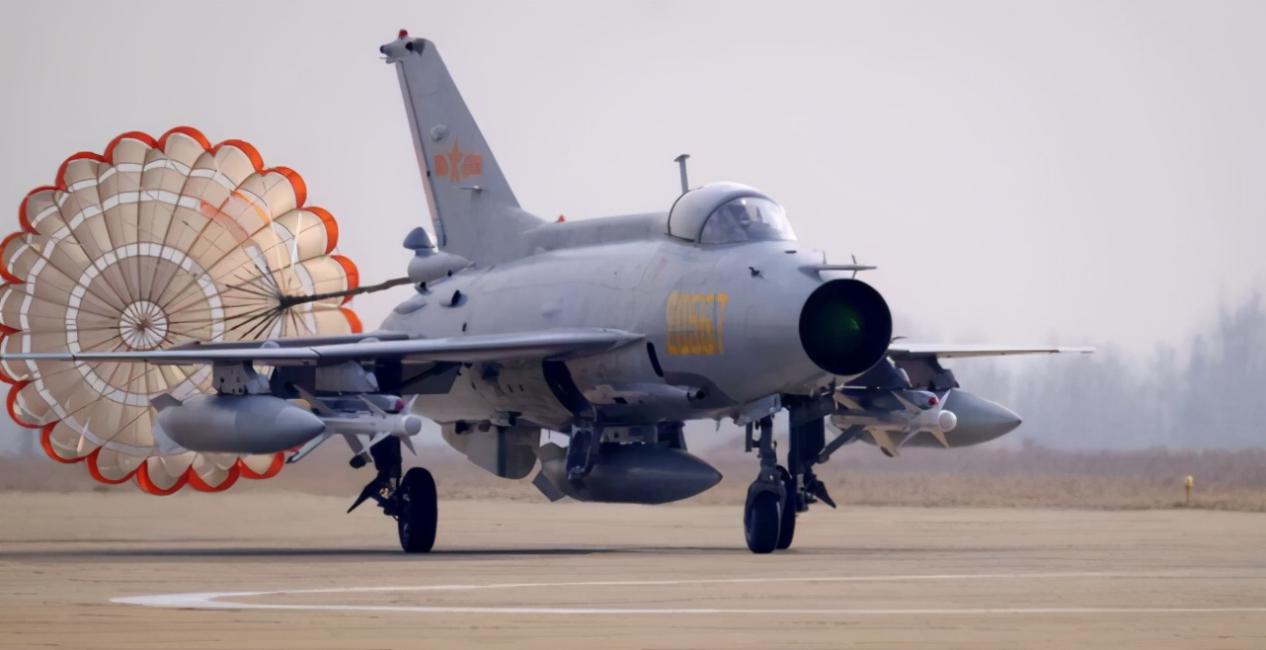The Global Times quoted an article in the US media “Military Observer Magazine” on November 29, stating that some air force units in the western theater of the People’s Liberation Army have begun to retire old-fashioned F-7 fighters in batches, and they are replaced by cutting-edge F-16 fighters. This fourth-generation semi-fighter made in China has always been known for its high performance.
Compared with the F-7 fighter, the F-16 fighter has a significant improvement in both avionics and firepower. More importantly, the range and combat radius of the J-16 fighters have also been greatly extended. The airspace that used to require a J-7 squadron to patrol in the past now only needs one J-16.
Moreover, the single-plane performance of the J-16 fighter can completely destroy a squadron of J-7 fighters. Such a replacement is very cost-effective.
In addition to reporting on the Chinese Air Force’s major moves in the west, this American media also pointedly pointed out that the back of the change is actually related to India. Since India made several provocations on the border, the People’s Liberation Army has accelerated the speed of equipment replacement and upgrades in border defense and related theaters.
Take the winter equipment of the border guards as an example. From the past “add more clothes and save resources” to “energy power generation and all-weather heating”, such a leap is equivalent to living in a large villa directly from a small earthen house. Moreover, with the advancement of the PLA’s high-level war thinking, the “quantity is king, and the whole people prepare for war”, which was pursued in the past, is no longer used. Instead, “equip highly professional soldiers with the world’s most advanced weapons.”
There is no doubt that this kind of thinking is in line with the current trend, especially the improvement of fighter performance, which enables a fighter to bomb a target area of several football fields in a short time. Such a firepower coverage density is unimaginable in the past. of.

Take the F-16 fighter as an example. If you carry four 500-kilogram “aviation dispensers”, you can hit four football fields at a time, and its single ammunition can hit 6000 square meters.
What the Indian army is pursuing at the border is “getting together and deploying,” and in front of the aerospace dispenser of the F-16 fighter, it is undoubtedly a “living target.” Moreover, the aviation dispensers carried by the F-16 are different from the past cluster bombs and cluster bombs. It is an off-zone strike weapon with a range of 60 kilometers and has precision guidance capabilities.
The ammunition can accurately appear on the top of the Indian army and then be thrown out. 240 “submunitions”. Of course, this is only one of the F-16 strikes on land. If necessary, the F-16 can also directly mount a nuclear warhead cruise missile to launch a tactical nuclear attack on the enemy in depth. In contrast, the Indian Army has no such equipment available, and the Su-30MKI and Rafale M fighters currently in service by the Indian Air Force are not as good as the F-16.
If you simply start an air battle without considering other factors, the F-16 fighter plane uses the airborne active phased array radar to directly launch the Thunderbolt 15 air-to-air missile from 200 kilometers away and then return home. The Indian fighter plane has no room to fight back.

Of course, the fundamental purpose of replacing the F-16 fighter is not to start a tedious and meaningless aerial battle. The fundamental purpose of acquiring the F-16 fighter in the western theater is actually to launch a “surgical strike” first.
The so-called “surgical strike” is to use advanced fighters to destroy the other’s airfields, radar stations, air defense positions, command posts, logistics centers and other important purposes before the opponent has time to react.
Without these guarantees, 400,000 Indian troops will be completely exposed to the superior firepower of the PLA. The boundary mountain has a complex structure, and the hard granite and the inaccessible frozen soil limit the excavation of trenches.
In news reports, we can often see that the temporary positions of the Chinese and Indian armed forces are made up of piles of bricks, earth and rocks. In fact, this is also helpless by the environment.

Without strong fortifications, the 400,000 Indian army would certainly not be able to take advantage of the PLA’s superior firepower. In fact, this is also an improvement in the PLA’s combat thinking.
So far, most of the military aircraft deployed by the People’s Liberation Army in the west are aircraft types that tend to cover firepower, such as the F-10C, F-16 and H-6, a small number of Chada UAVs and Su-27 fighters, but they are only for other battlefields. Situation, its proportion is far less than the top three.
The US media “Military Observer Magazine” also believes that the PLA will give priority to deploying high-performance fighter jets such as the J-16 in the west, which in itself also attaches importance to the situation in the west. So far, the PLA’s high-performance fighters have generally been rationed to the southern and eastern theaters, because the defense pressure in these two directions is very heavy. In addition to Japan and Taiwan, there are also frequent harassment by the US military.
The central theater and the northern theater are dominated by old-fashioned fighters, supplemented by advanced air defense and anti-missile systems, forming a complete combat system.
Moreover, advanced fighters can move in quickly and can be quickly deployed to other theaters if necessary. The only shortcoming is that the output of advanced fighters is not enough, and it is not enough to complete the replacement of all theaters.



